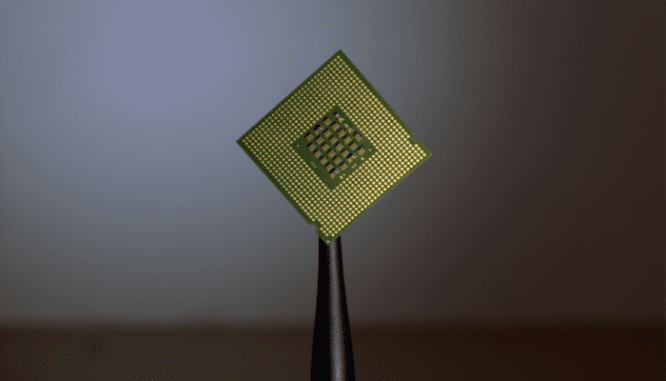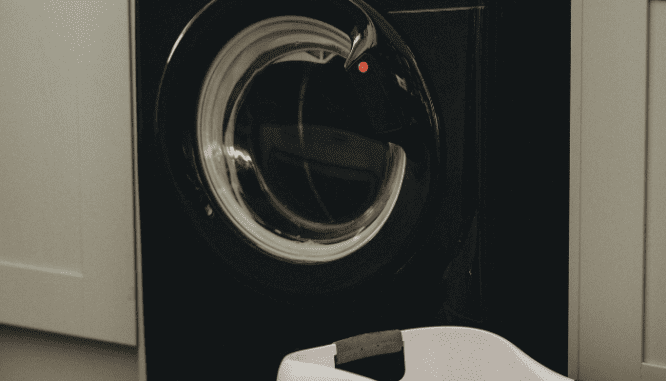Remodeling? The Global Chip Shortage Could Throw Your Plan for a Loop
- Published on
- 6 min read
-
 Rebecca Sandmeyer Contributing AuthorClose
Rebecca Sandmeyer Contributing AuthorClose Rebecca Sandmeyer Contributing Author
Rebecca Sandmeyer Contributing AuthorRebecca is a Boulder, Colorado based writer with a keen eye for detail and not-so-guilty pleasure for Love it or List it marathons. With ten years of experience in education, digital content creation, and curriculum development, Rebecca’s work has been featured on Study.com and BetterWorldEd.
After spending more time at home than ever this past year, you’re ready to remodel your living space. You fantasize about freshly cut quartz countertops and brand new stainless appliances adorning your kitchen. But before you get your heart set on completing that reno by summer, note this potential roadblock: the global chip shortage has led to a home appliance deficit.

The chip (or lack thereof) that broke the global supply chain’s back
Before you google “chocolate chip shortage” or “potato chip shortage” in a confused attempt to understand how such deliciousness could be the precursor to a global crisis, know that the chip we’re referring to isn’t edible — it’s electronic.
The concept of a chip in and of itself can be a bit confusing, so let’s start out with the basics. A chip (AKA microchip or semiconductor) is a tiny device that provides power to all the electronic gadgets and gizmos of the world.
The miniature wafer is a pervasive life-force that powers our tech-savvy world. Chips are in everything electronic and imaginable: planes, trains, and automobiles — not to mention your iPhone, MacBook, and GE Tumble Dryer. Your standard 5g smartphone, for example, has roughly eight power-management chips inside of it.
With $464 billion in revenue in 2020 and predicted industry growth of 12.5% to surpass $500 billion, the chip market is undeniably booming. So, how did we find ourselves in a global chip shortage?
An unforeseen spike in consumer electronic and automobile sales coupled with the pandemic-prompted shutdown of manufacturing plants has led to a scarce supply of the coveted chips. A Goldman Sachs report estimates that 169 industries in the U.S. have been directly affected by the shortage.
While investment in new microchip fabrication facilities is well underway — in part thanks to President Biden’s $50 billion plan to reverse our reliance on foreign chip production — unfortunately, there is no quick fix. The construction of new facilities is an extensive (and expensive) endeavor. It could take three years from the start of construction to the actual production chips.
Expect the chip shortage to impact your kitchen remodel
You’ll most likely feel the impact of the chip shortage when shopping for home appliances. Nearly every kitchen appliance that hums with a handle contains a chip, including:
- Refrigerators
- Freezers
- Gas ranges
- Toasters and toaster ovens
- Microwaves
- Slow cookers
- Blenders
- Air filtration devices
In a survey by the National Association of Home Builders and Wells Fargo, nearly 90% of builders said they had trouble ordering appliances over the past six months, reporting that the hardest items to hunt down were fridges, dishwashers, microwaves, and ovens. Real estate agents confirm the shortage, with 51% of agents in HomeLight’s Top Agent Insights for Q4 of 2020 reporting an appliance shortage in their market.
So if you’re looking for new appliances, prepare to face reduced product selection and shipping delays.

Consumer demand has amplified the appliance shortage
The chip shortage perfectly aligned with a spike in home appliance purchases, heightening the impact of the appliance shortage.
Three-quarters of agents surveyed in our Top Agent Insights for Q3 2020 reported that homeowners were remodeling or planning to in light of spending so much time at home.
In addition to eager remodelers, some Americans purchased secondary appliances at the beginning of the pandemic to stockpile frozen provisions in case of food shortages.
Many home appliance-makers struggled to keep up with this increase in demand. Whirlpool, one of the world’s largest appliance manufacturers, reported that their chip orders in March 2021 were 10% short, which pushed back production amid mounting demand. Swedish luxe-appliance brand Electrolux also reported a remarkably low inventory this past fall despite higher-than-average production levels.
Appliance prices are on the rise as a result
The never-ending dance of supply and demand almost always has an impact on pricing — and it appears the home appliance manufacturing industry is not immune to the market’s waltz.
According to a report by Goldman Sachs Group Inc., the reduced supply of semiconductors has boosted prices of some products by as much as 3%. Many manufacturers have already announced a price hike in response to the supply-chain disruption and increased demand. For instance, Whirlpool has confirmed a 5% to 12% price increase for their products in April, while LG Electronics announced they may adjust prices, depending on the effectiveness of new production strategies.
Appliance prices may further increase due to rising inflation. According to the U.S. Bureau of Labor Statistics, consumer prices in 2021 have reached an all-time high. With a 4.2% rise since April 2021, the consumer price index (CPI) has seen the most significant increase in the last 13 years.

Tips to workaround the chip shortage
If you’re on the hunt for appliances that are short in supply, follow these tips:
1. Determine if your appliance of choice is still available
According AHAM’s survey, 74% of consumers reported they were able to purchase their appliance choice during the pandemic. However, the availability of appliances may worsen as retailers experience the full effect of the supply-chain disruption in the upcoming months.
If you’re in the market for new appliances, research your top picks along with some back up options. Search for your appliances online and in-person. If an appliance is sold out, you may be able to set an email notification to alert you when the item is back in stock.
2. Read the delivery window carefully (and take it with a grain of salt!)
Due to supply chain disruptions, delivery times for many products are delayed days, weeks, and sometimes even months. According to project44, a platform that tracks shipping and logistics from ports worldwide, many major carriers reported delays on up to 50% of goods in April 2021.
Before you place an appliance order online, read the delivery details carefully. You might be waiting on that new refrigerator all summer.
3. Keep your current appliances until your new ones arrive
Hang onto your old appliances until your new appliances arrive. If your shipment is delayed, the last thing you want is the compounded frustration of hand washing your dishes or laundry until the machine arrives.
4. Shop for used appliances instead
While the allure of brand new appliances is enticing, you can always opt for affordable appliances if you can’t find the models you’re looking for. The price of pre-owned appliances varies, but you can expect to save 50% to 75% compared to buying new.
The average refrigerator and gas range have a lifespan of 13 to 15 years, so the odds of finding a decent used option are pretty high.
Scope out your local used appliance stores and online marketplaces like OfferUp and Facebook Marketplace. Be sure to check for warranties and read through consumer reports to ensure your bargain isn’t on the fast-track to becoming faulty baggage. Who knows, you may score that stainless Sub Zero fridge you’ve been eyeing for a fraction of the price.
5. Browse a wider selection of appliances online
Pre-pandemic, most homeowners preferred to pursue their appliance purchases in-person. There’s just something satisfying about strolling down the aisles of Best Buy to inspect the immaculately lined up appliances.
However, the tides have turned, as the spike in pandemic-era online shopping (along with shortages) has led more consumers to browse appliances online. AHAM reports that 55% of consumers purchased their new appliance online during the pandemic. 70% of these consumers said it was their first time purchasing appliances online.
While you can still get your appliance-ogling fix at your local big box, check out the abundance of online offerings for a wider selection.
Expect low inventory on appliances for the foreseeable future
Even as we move towards pre-pandemic normalcy in other regards, industry experts predict that the chip crisis may take longer to bounce back.
Cisco predicts the shortage will last at least another six months, while others anticipate longer. Manufacturers like LG Electronics predict the shortage will continue through the next year.
Economic experts like Glenn O’Donnell speculate that the chip shortage could impact product availability through to 2023. By then, experts anticipate that the new chip manufacturing factories being built today will be fully up and running — and finally ready to roll out those coveted chips.
Header Image Source: ( Bartosz Kwitkowski / Unsplash)
